MARIANI’S
Virtual
Gourmet
NOVEMBER
29, 2015
NEWSLETTER
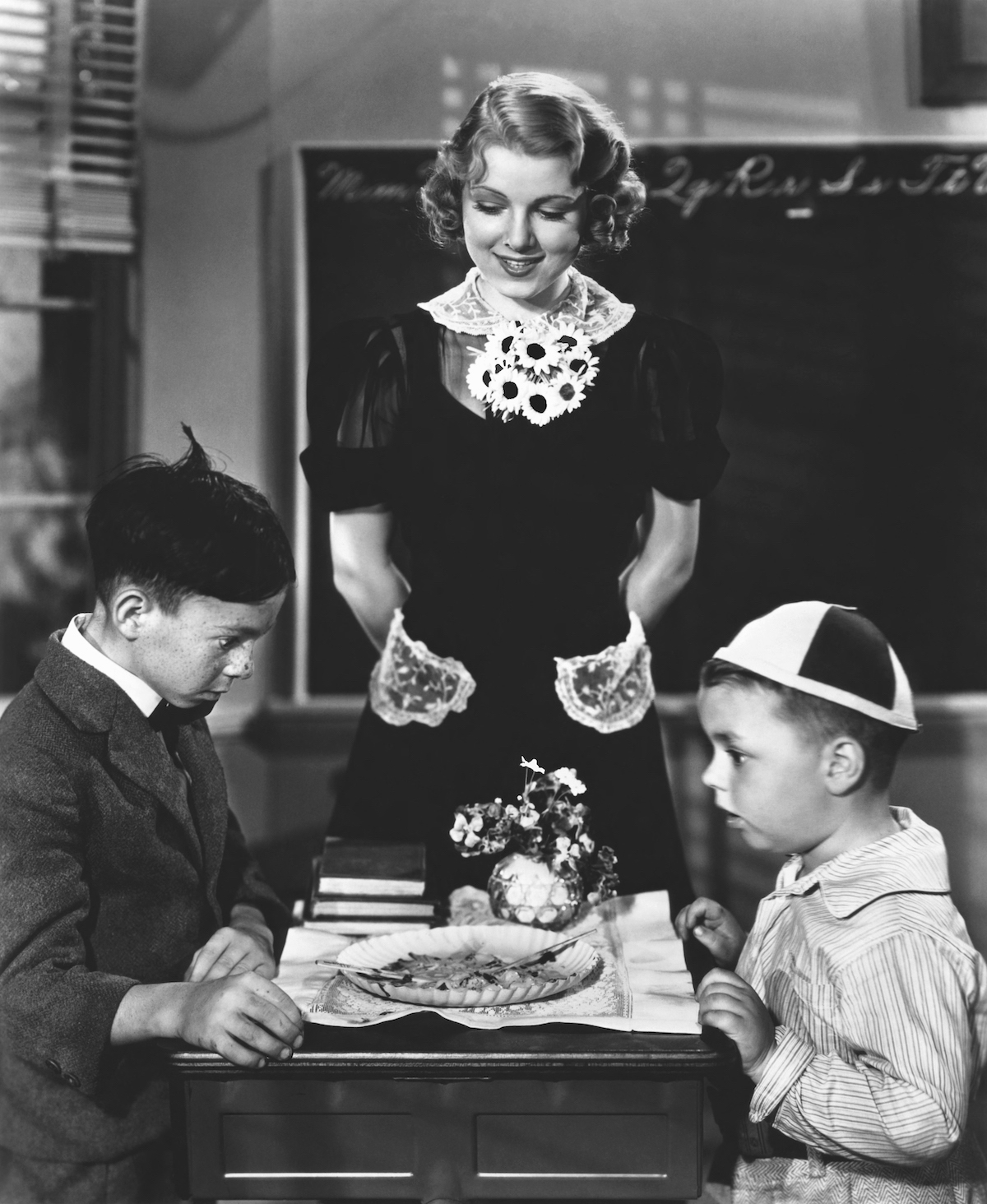
❖❖❖
IN THIS ISSUE
HOLIDAY BOOKS AND GIFTS
By John Mariani
NEW YORK CORNER
THE BACK ROOM at the PARK HYATT
By John Mariani
NOTES FROM THE WINE CELLAR
SOME THOUGHTS ON PARIS, TERROR AND CHAMPAGNE
By Brian Freedman
❖❖❖
HOLIDAY BOOKS AND GIFTS
By John Mariani

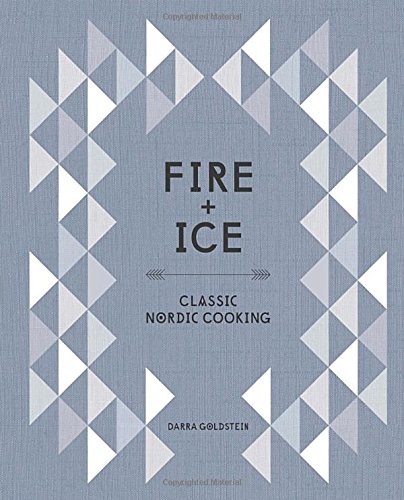 FIRE + ICE: Classic
Nordic Cooking by Darra Goldstein ( $40)—For
those who think that “New Nordic Cuisine” has
anything to do with what people actually cook and
eat in Scandinavia, Darra Goldstein’s thick volume
should shock you back to reality, without a live ant
or lichen on the plate. Although Goldstein is not from
any of the countries, she covers in this splendidly
illustrated volume, she’s always been an intrepid
scholar of culinary culture, and it shows in her
understanding and preparation of dishes as disparate
as chilled blueberry soup, asparagus and dill
terrine, Jansson’s Temptation, and Swedish almond
bread.
FIRE + ICE: Classic
Nordic Cooking by Darra Goldstein ( $40)—For
those who think that “New Nordic Cuisine” has
anything to do with what people actually cook and
eat in Scandinavia, Darra Goldstein’s thick volume
should shock you back to reality, without a live ant
or lichen on the plate. Although Goldstein is not from
any of the countries, she covers in this splendidly
illustrated volume, she’s always been an intrepid
scholar of culinary culture, and it shows in her
understanding and preparation of dishes as disparate
as chilled blueberry soup, asparagus and dill
terrine, Jansson’s Temptation, and Swedish almond
bread.
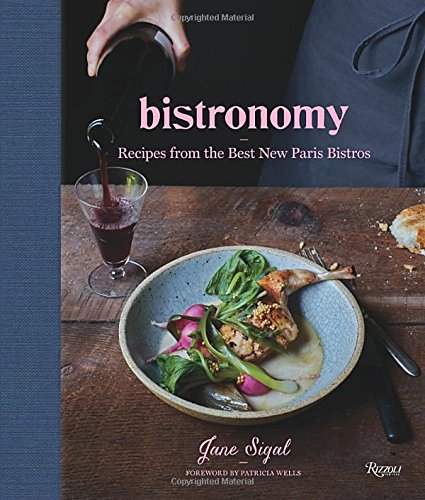
BISTRONOMY:
Recipes from the Best New Paris Bistros
by Jane Sigal ($39.95)—If you believe media who
insist French cuisine has become stultified, open
this beautiful book and be prepared to find that the
best young chefs of Paris are doing stunning work,
usually in homage to the classics but also wholly
their own invention.
You’ll find Yves Camdeborde’s green lentil
soup with tapioca from Le Comptoir; charred squid
with boudin
noir, peas and herbed oil from Shaun Kelly’s
namesake restaurant; monkfish with asparagus and
parmesan cream from Amélie Darvas’s Haï Kaï; pork
belly with darphin
potatoes and tamarind jus from
Septime’s Bertrand Grébaut; and chocolate terrine
with caramelized hazelnuts by Stéphane Jégo of
L’Amis Jean. A
sense of conviviality and youthful enthusiasm runs
through the book, without a scintilla of
affectation.
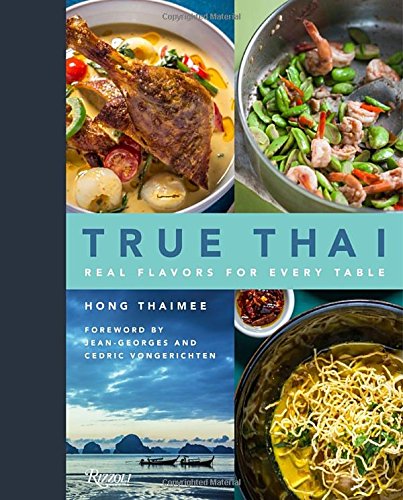 TRUE THAI : Real Flavors
for Every Table by Hong Thaimee ($35)—The
subtitle of this book may be somewhat disingenuous,
for many of the recipes require difficult-to-obtain
ingredients of top quality, and, frankly, who’s
going to make his own Chiang Mai sausage at home? But
Thaimee is an attractive, amiable and instructive
teacher who insists that the Thai rule of thumb of rod mue—the
“flavor of your hand,” meaning your own personal
taste—be observed. The recipes are very well written
and ever enticing, from coconut and wild sesame
sticky rice to “The 15-Minute Soup That Changed My
Life,” a shrimp dish with tamarind Thaimee made on
the Iron Chef America TV show .
TRUE THAI : Real Flavors
for Every Table by Hong Thaimee ($35)—The
subtitle of this book may be somewhat disingenuous,
for many of the recipes require difficult-to-obtain
ingredients of top quality, and, frankly, who’s
going to make his own Chiang Mai sausage at home? But
Thaimee is an attractive, amiable and instructive
teacher who insists that the Thai rule of thumb of rod mue—the
“flavor of your hand,” meaning your own personal
taste—be observed. The recipes are very well written
and ever enticing, from coconut and wild sesame
sticky rice to “The 15-Minute Soup That Changed My
Life,” a shrimp dish with tamarind Thaimee made on
the Iron Chef America TV show .
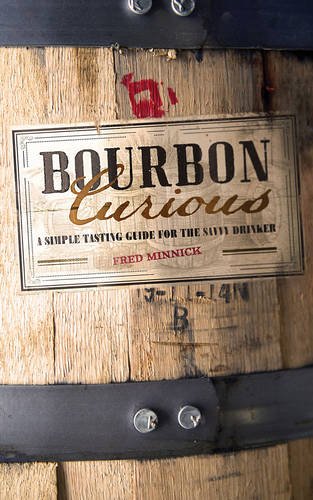
BOURBON CURIOUS: A Simple Tasting Guide for the
Savvy Drinker
by Fred Minnick ($22.99)—Fred Minnick is my favorite
spirits writer because he is knowledgeable, writes
beautifully, and turns what could be a screed of
dull tasting notes into an insightful discussion of
the exploding world of a “brown liquor” that even
ten years ago seemed poised to be relegated to
redneck bars and juleps once a year on Derby Day. He spends
nearly 100 pages giving you the history, the lore,
the legal limits, and exposes much of the nonsense
spread by producers about the confusing myriad
single, small, ultra-rare bottlings with special
treatment in casks coming out of Kentucky on a
seasonal basis. Trust Minnick to steer you to the
best of them.
GOVINO
Wine
Glasses—Up till now the idea of drinking
fine wine from a plastic glass has been up there
with 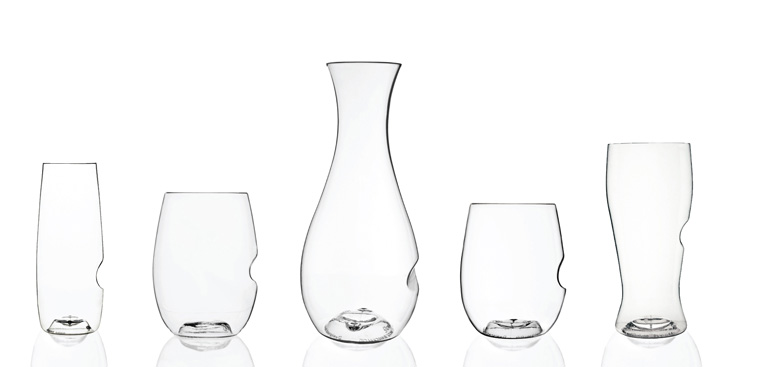 eating a fine meal with
plastic knives and forks and paper napkins. They
feel awful in the hand, they smell, and they are
associated with every cheapo patio party I’ve ever
been to. But
when I received a sample of the govino (all
lower case letters) “glassware” I was truly
astounded by their beauty, their extraordinary
thinness, and, like the very finest and most
expensive wineglasses in the world, a lightness
whose added virtue is that they are shatterproof. (Always
fun to toss one to a friend unaware that the glass
won’t break in his hand.)
eating a fine meal with
plastic knives and forks and paper napkins. They
feel awful in the hand, they smell, and they are
associated with every cheapo patio party I’ve ever
been to. But
when I received a sample of the govino (all
lower case letters) “glassware” I was truly
astounded by their beauty, their extraordinary
thinness, and, like the very finest and most
expensive wineglasses in the world, a lightness
whose added virtue is that they are shatterproof. (Always
fun to toss one to a friend unaware that the glass
won’t break in his hand.)
They are made from a flexible BPA-free
polymer and have no odor at all. Unless
you tell a person they’re plastic, he may never
know. Outside
on the patio or around the pool or at the beach, I
can’t think of anything I’d rather bring besides a
good bottle (in glass) of wine.
The govino glasses were
originally made for wine industry people to take
traveling to give store tastings, and they really
are slightly flexible. And they’re made in the
U.S.A.!
They come in a variety of sizes,
including decanters and cocktail glassware, and
there is a dishwasher safe variety gift pack for
$99.75 that includes a 16oz Wine
Glass 4-Pack; 8oz Flute 4-Pack; 12oz Wine/Cocktail
4-Pack; 16oz Beer Glass 4-Pack and 28oz Decanter.
 TRAVELREST® Travel Pillow ($39.95)—I’ve
probably bought and lost or discarded half a dozen
travel pillows over the years, most of them those
spongy things, some plastic blow-ups, and none has
ever really eased me into a good position on a
plane, where I’m a bad sleeper. But this
new ergonomic pillow by Travelrest® actually does
mold itself to your neck and has a good but
comfortable grip on you. It does look a bit like a neck
brace, but having given it a work-out on two flights
recently, I found it the best of its kind I’ve ever
nodded off on.
And it comes with its own pouch because you
can compress and fold it up, and it always springs
back.
TRAVELREST® Travel Pillow ($39.95)—I’ve
probably bought and lost or discarded half a dozen
travel pillows over the years, most of them those
spongy things, some plastic blow-ups, and none has
ever really eased me into a good position on a
plane, where I’m a bad sleeper. But this
new ergonomic pillow by Travelrest® actually does
mold itself to your neck and has a good but
comfortable grip on you. It does look a bit like a neck
brace, but having given it a work-out on two flights
recently, I found it the best of its kind I’ve ever
nodded off on.
And it comes with its own pouch because you
can compress and fold it up, and it always springs
back.
❖❖❖
By John Mariani
THE BACK ROOM
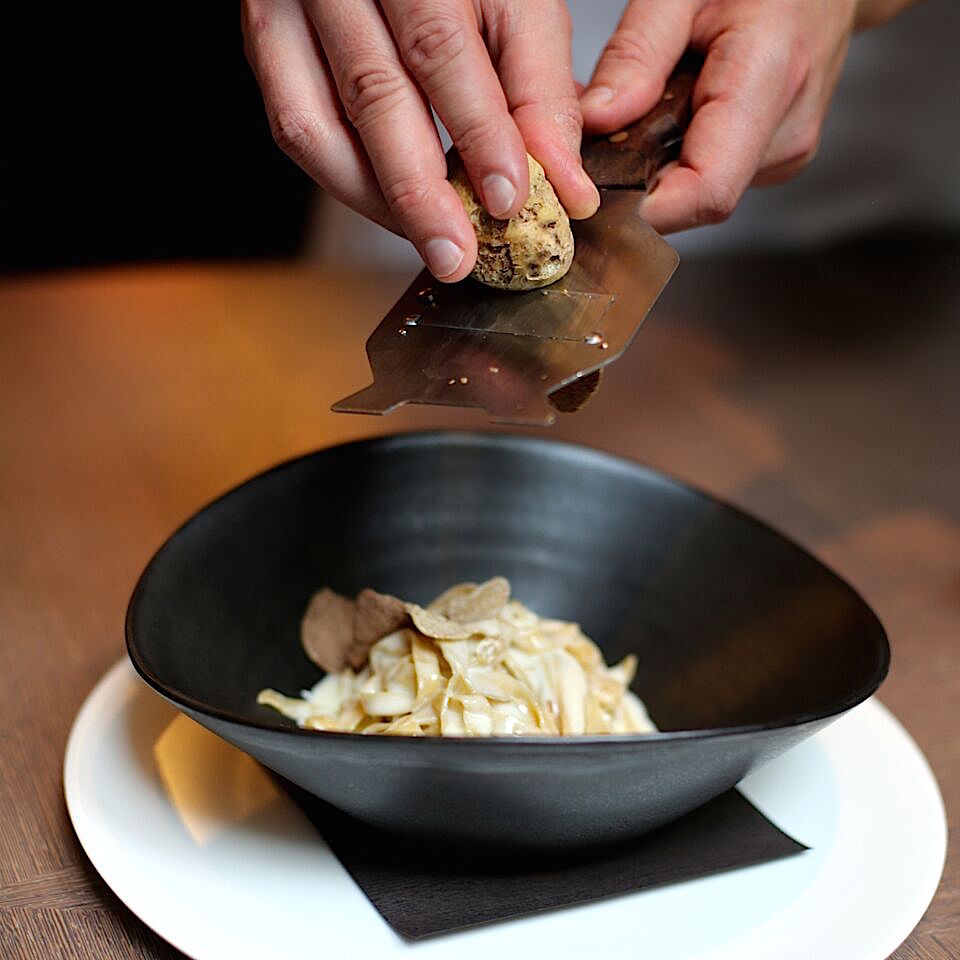
Park Hyatt Hotel
153 West 57th Street (near Seventh Avenue)
212-897-2188
www.hyatt.com/back-room
Hotel dining rooms are not an easy
sell in NYC, despite some illustrious examples
like Jean-Georges and NoMad. Generally
speaking, the food media rarely cover them and,
when they do, it is with a shrug or to accuse a
celebrity chef of merely lending his name, not
his presence, to a space that must serve
breakfast, lunch and dinner.
A hotel restaurant has,
therefore, to be very special to get notice
and respect, so giving a dining room a drab name
like The Back Room in the Park Hyatt is hardly an
enticement.
And, contrary to the kind of thought,
design, and money the Park Hyatt brand has put
into its elegantly appointed restaurants in cities
like Paris, Milan, Vienna, and Chicago, the NYC
developer originally decided The Back Room would
be the most expensive steakhouse in America within
the shell of a gloomy dining room done in various
shades of dark brown, tabletops included, and cold
lighting that seems oddly fluorescent.
So, while the developers sold
$100 million condos upstairs, no one wanted to eat
downstairs, and the few notices the restaurant
received were dire.
When I dined there early on I thought the
beef was of very high quality but not much else
about the restaurant was, so I was more than
puzzled as to why the owners seemed to have no
interest in putting in a first-rate restaurant to
bolster the Park Hyatt brand.
 Now, after a
year of chef changes and strategies, thanks
to Executive Chef Sebastien Archambault and
Chef de Cuisine Chad Brauze, the menu has become focused and
the food excellent. Steaks, much reduced in price,
are still on the menu but there's so much more to
like. Brauze has worked at Restaurant Daniel
and Per Se in NYC, Lédoyen, George V, and Pierre
Gagnaire in Paris, and, most recently, in NYC at
Rôtisserie Georgette.
Now, after a
year of chef changes and strategies, thanks
to Executive Chef Sebastien Archambault and
Chef de Cuisine Chad Brauze, the menu has become focused and
the food excellent. Steaks, much reduced in price,
are still on the menu but there's so much more to
like. Brauze has worked at Restaurant Daniel
and Per Se in NYC, Lédoyen, George V, and Pierre
Gagnaire in Paris, and, most recently, in NYC at
Rôtisserie Georgette.
The room
still looks like a V.I.P. lounge at a sports
stadium. But I found the entire staff, led by
general manger Arleene
Oconitrillo, formerly of Picholine, Per Se and
Eleven Madison Park, professional, more than
amiable and well informed. Wine
Director Tristan Prat-Vincent, formerly at Véritas
and Betony, has also managed to compile a wine
list that can rank with the most impressive in
NYC.
We dined in the middle of a
special promotion (which will last until December
4) featuring several dishes with white truffles. So one
of our first courses was a simple luxury of softly
scrambled eggs with toasted brioche and shaved
white truffles ($55), each ingredient a 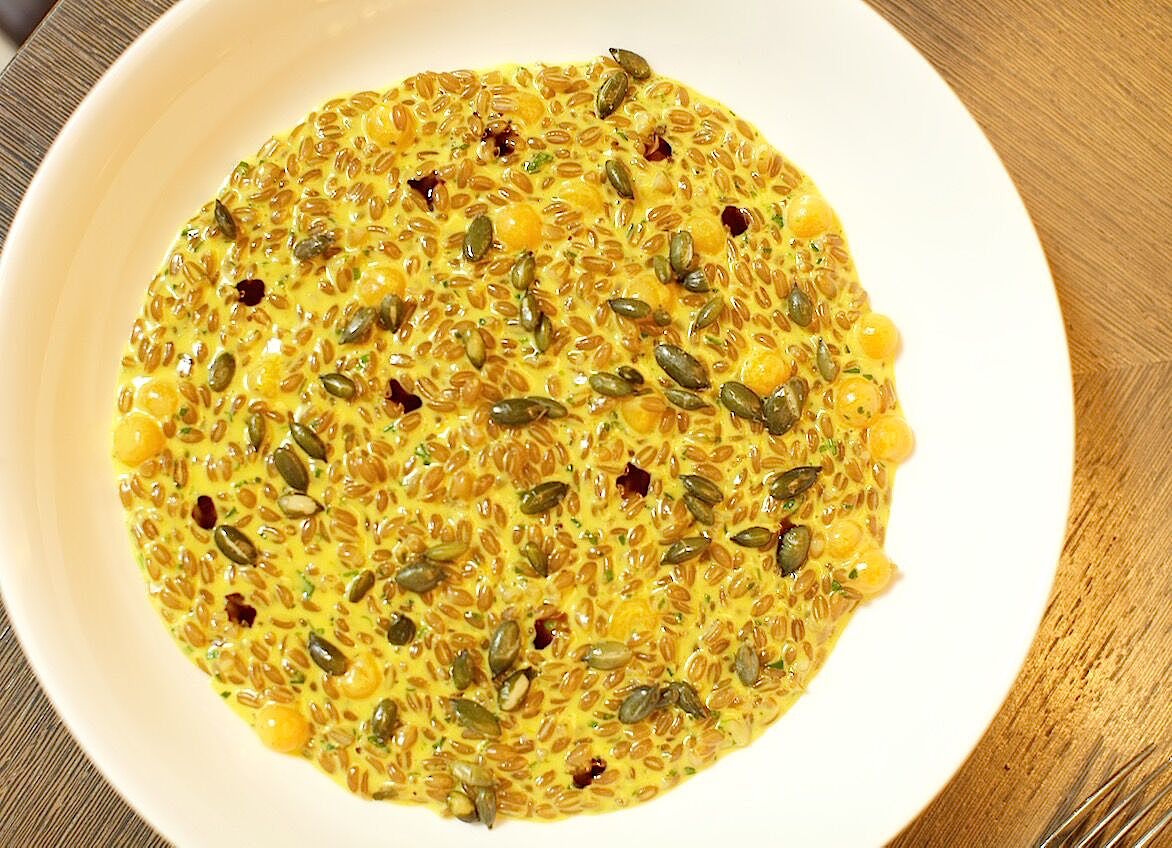 perfect complement to the rest. Similarly,
a main course of housemade fettuccine (above) mixed
with rich Toma Celena cheese and shaved white
truffles ($55)
needed nothing more to be magnificent.
perfect complement to the rest. Similarly,
a main course of housemade fettuccine (above) mixed
with rich Toma Celena cheese and shaved white
truffles ($55)
needed nothing more to be magnificent.
Seared Hudson Valley foie gras
($24) had the sweet flavors of autumn to buoy
it—plum chutney and apple, with duck jus and
brioche—while farro (right) was ennobled with
pumpkin, green apple, pumpkin seeds and a vin jaune
($16). Grilled
octopus (slightly fishy that evening) was
imaginatively combined with a garlic coulis,
bean ragôut and shallot-mustard vinaigrette ($18).
So rarely
does turbot travel well to American kitchens, but
Brauze finds a way to give this silly fish its
due, gracing it with more white truffles. The first
venison I’ve had this season was served with tangy
Port-braised cabbage, with quince and huckleberry jus
($38), and the newest ingredient popping up around
the city, Mangalitsa pork collar, the fattiest
part of an Austrian pig, came with baby turnips,
radish and a mustard seed jus
($38).
A generous, very juicy, well-marbled ribeye
cap ($56) took well to chanterelle mushrooms and a
well-reduced red wine jus. Of the side dishes, cheddar
and potato croquettes ($14) should be considered
as an extra indulgence by every table.
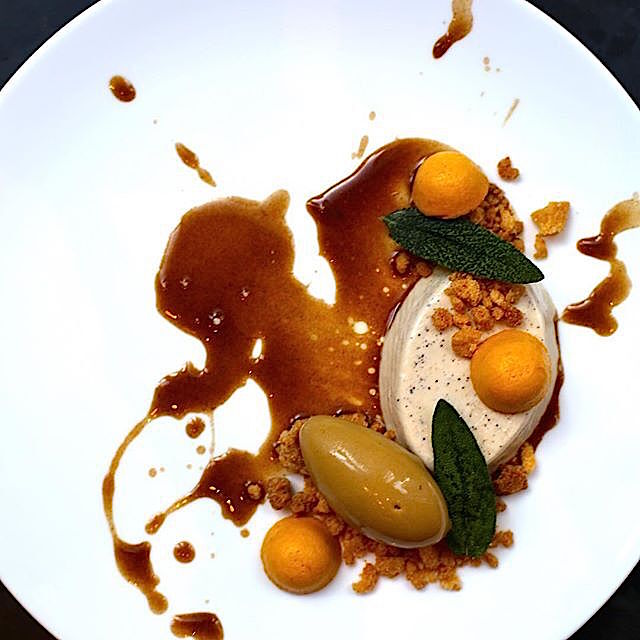 I can’t
find anything to criticize among Scott Cioe’s
autumn desserts ($12) like brown butter panna cotta
with pumpkin semi-freddo,
burnt milk coulis,
sage and molasses ice cream or cocoa toffee
pudding with brûléed bananas, salted cocoa nibs
and malted milk ice cream, except it would be nice
to serve some with more texture than so many soft,
creamy, mushy ones on the current menu. But you
won’t go away disappointed with them either.
I can’t
find anything to criticize among Scott Cioe’s
autumn desserts ($12) like brown butter panna cotta
with pumpkin semi-freddo,
burnt milk coulis,
sage and molasses ice cream or cocoa toffee
pudding with brûléed bananas, salted cocoa nibs
and malted milk ice cream, except it would be nice
to serve some with more texture than so many soft,
creamy, mushy ones on the current menu. But you
won’t go away disappointed with them either.
Brauze
most certainly has the talent to get The Back Room
noticed, and the once out-of-whack prices have
come down considerably, especially for food of
this high quality.
Now, if the owners would only consider
lightening up and making more colorful what now
has the gloom of “hotel dining room” on it, Brauze
and his team may get the credit they now richly
deserve.
Open daily for
breakfast, lunch and dinner.
❖❖❖
SOME THOUGHTS ON PARIS, TERROR AND CHAMPAGNE
By Brian Freedman
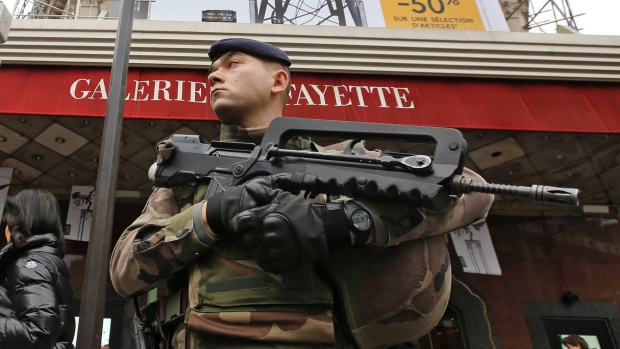 The
news of the Paris attacks last Friday began
spreading a little after 4pm. But I’d had one of
those days where I was running behind from the
start—the kids dawdled through breakfast; my
younger daughter, who turned two years old that
very day, had spent the second half of the
afternoon in a state of perpetual meltdown; the
writing just wasn’t coming easily, no matter how
hard I tried to buckle down and work, and by late
afternoon, I was scrambling to buy the ingredients
for dinner.
The
news of the Paris attacks last Friday began
spreading a little after 4pm. But I’d had one of
those days where I was running behind from the
start—the kids dawdled through breakfast; my
younger daughter, who turned two years old that
very day, had spent the second half of the
afternoon in a state of perpetual meltdown; the
writing just wasn’t coming easily, no matter how
hard I tried to buckle down and work, and by late
afternoon, I was scrambling to buy the ingredients
for dinner.
I got home, mixed up a quick
martini, and got down to the business of mashing
the avocados for the guacamole, and seasoning the
ground pork, and chopping up the cilantro: It was
Taco Night in the Freedman house. Both my phone
and my wife’s, always placed in silent mode and
relegated to the countertop next to the sink
during meals, vibrated throughout dinner. But the
rule in our house is that the table is a sacred,
electronic-device-free zone. So we didn’t get up
to look what the fuss was.
Only once we’d finished dinner,
wiped our kids’ faces of drying salsa and caked-on
black beans did we check our phones. Which is when
we finally saw what was just then happening in
Paris. After absorbing as much news as we could in
the short time we knew the girls would be
distracted, we decided not to let on that anything
unusual was happening. So we walked upstairs with
them and put them to bed, before
hustling downstairs to begin the grim and
all-too-familiar process of watching the news
anchors ask awkwardly intimate questions of
just-escaped survivors and listening to the
pronouncements of experts hustled into the various
stations’ studios.
As someone in the wine
business, it’s perhaps inevitable that I have many
French friends and colleagues. And, indeed, France
has always played a wildly important role in my
life: I first visited the country (and the
continent) in 1994, as a high-school saxophonist
on the American Music Abroad program: My first
time in Europe. The few days I spent there, I can
say without exaggeration, changed the course of my
life. It was there that I was bitten by the travel
bug, and determined, even at just 17 years old, to
spend my life exploring Europe in particular and
the world in general, as much as I possibly could.
Three
years
later, I left Penn State for a semester and
enrolled at the wonderful American University of
Paris, where I made friends that I still speak
with today, nearly 20 years later. And now, at 38
years old, I still have to pinch myself when I
have the chance to travel to France for the
insanely fortunate work of tasting and learning
about wine.
The next morning, Saturday the
14th, I spent much of my time watching the news,
and reading the latest updates on the New York
Times iPhone app, and checking in on friends and
colleagues in France and elsewhere as they
continued to update their Facebook information.
That night, we went to our good
friends’ house for dinner. When the time came to
decide what to bring, I knew exactly what it would
be: The idea, in fact, was precisely the same as
the one that dictated what we drank during the
first meal my then-girlfriend-now-wife and I
shared with our families after September 11th.
Both of us had been in New York that day. I was a
student-teacher at Stuyvesant High School, far too
close to Ground Zero, and watched countless
people, mothers and fathers and sons and daughters
and bosses and employees, leap or fall to their
death, a hundred stories below. My wife, who was
working in Times Square at the time, was
unreachable by cell phone for hours on end. It
wasn’t until I’d walked back home, on East 95th
Street, more than a hundred blocks north, that I
knew for sure she was okay.
It took several days before we
were able to get out of the city, before the
trains began running with enough reliable
consistency that we could chance the otherwise
quick journey back to the suburbs of Philadelphia.
That night at dinner, as my parents’ neighbors
lined those quiet, unassuming suburban streets
with lanterns and candles, my father opened up one
great bottle of wine after another from his
collection: Classed growth Bordeaux, California “cult” Cabernets, old Port, and more. Because,
he said through tear-stained eyes, the
perpetrators of the attacks of 9/11 did so out of
hatred, and out of a bloodlust for ugliness, and
violence, and malice. Opening those wines, he
believed, was a repudiation of everything they
railed so horrifically and violently against. A
middle-finger, he said, aimed, in our own small
way, right at them.
So on the night of November
14th, I brought to our friends’ house a bottle of
Pol Roger Champagne. We opened it up and raised
our four glasses in honor of the victims, our
brothers and sisters in France, and for peace. The
juice in that bottle was a testament to the beauty
that man is capable of creating when his goals are
pleasure, and honesty, and joy. To my mind, it
stood in diametrically opposed relation to the
havoc the terrorists wrought on one of the
greatest cities on the planet, in the country that
has had such a profound, indeed paradigm-shifting
impact on my own life. We drank to the victims,
and to the survivors, and to the families and
friends of them all who were so tragically
affected by it. Which, when you think about it,
means all of us. Because all right-thinking people
must stand united against these hateful
peddlers of an ideology of such vileness, of such
ugliness.
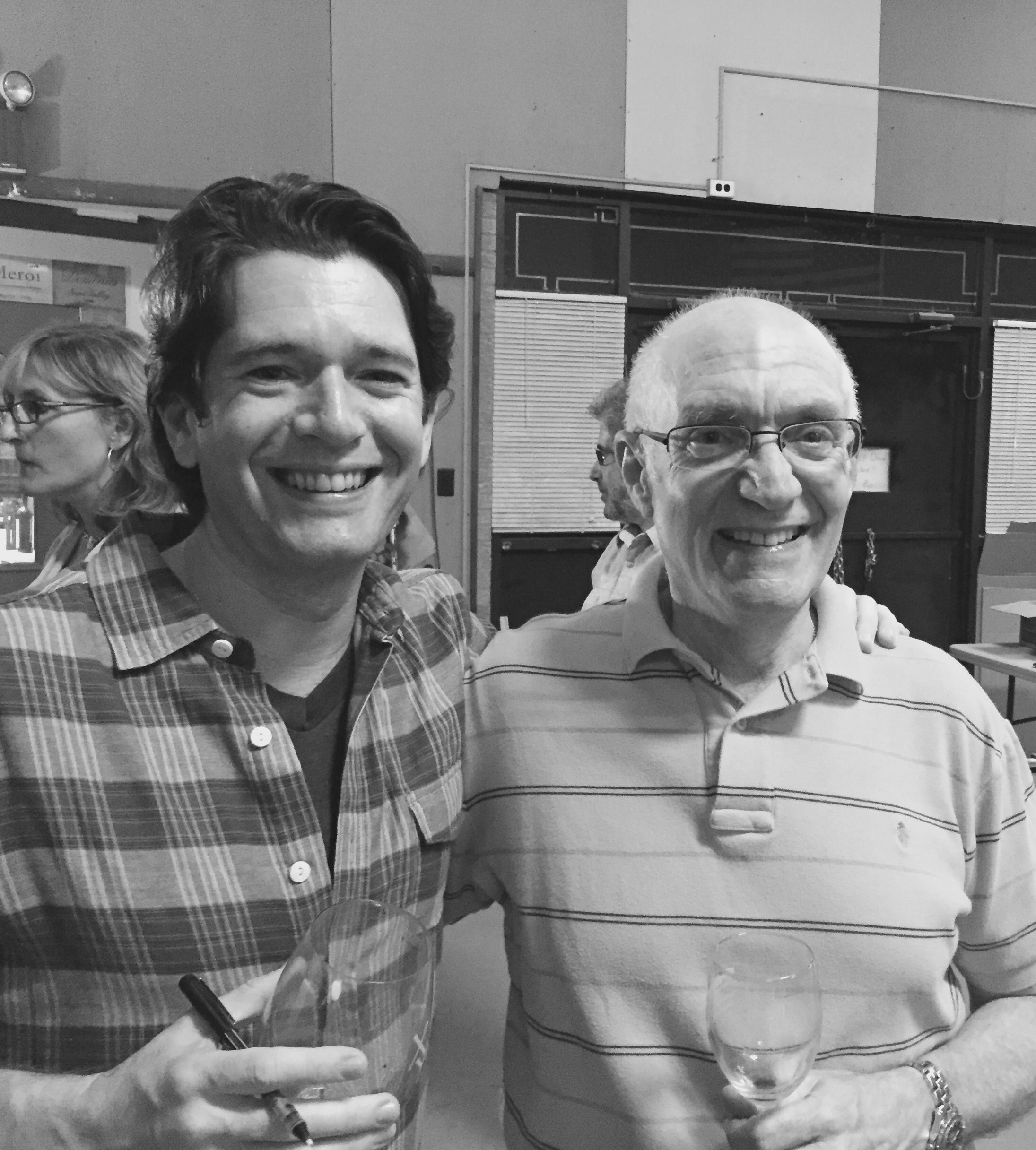 Earlier
on
the day of the 13th, just hours before the first
shots were fired and the first suicide vest
detonated, my wife and I had decided on a house in
Provence at which we will likely be spending a
month this coming summer with our daughters.
Before we went to bed that night, we agreed that
the attacks would not change our plans one bit,
and that we would press ahead. Because just like
that Champagne on Saturday night, and just like my
father’s wines more than 14 years ago, joy and
beauty and promise have to win out over
the extraordinarily ugly and nihilistic worldview
espoused by those who so deeply despise all that
is beautiful in this world, those whose hatred of
light and love is only matched by their zeal for
death and destruction.
Earlier
on
the day of the 13th, just hours before the first
shots were fired and the first suicide vest
detonated, my wife and I had decided on a house in
Provence at which we will likely be spending a
month this coming summer with our daughters.
Before we went to bed that night, we agreed that
the attacks would not change our plans one bit,
and that we would press ahead. Because just like
that Champagne on Saturday night, and just like my
father’s wines more than 14 years ago, joy and
beauty and promise have to win out over
the extraordinarily ugly and nihilistic worldview
espoused by those who so deeply despise all that
is beautiful in this world, those whose hatred of
light and love is only matched by their zeal for
death and destruction.
The Champagne was delicious,
and provided a sort of pleasure—not just to the
senses, but to the soul, too—that those terrorists
will never have the opportunity to enjoy. They
don’t deserve to anyway.
This essay first
appeared in The Food, Drink &
Travel Report, at
www.fooddrinkandtravelreport.com
❖❖❖

WORST NAME FOR A FUDGE DESSERT--EVER!!
"Duff's Good-Ass Fudge" in Duff Bakes by Duff Goldman (left) and Sara Gonzales.
ACTUALLY WE WERE
THINKING MORE , LIKE, MULLETS, 
MTV MUSIC VIDEOS, RUBIK’S CUBE, AND NEW COKE
“Is
there
anything more eighties than having money? Maybe melon
and prosciutto. And caviar blinis. Zinfandel, for
sure.”—Amelia Lester, “Jams,” The New Yorker (11/2/15)
Any of John Mariani's books below may be ordered from amazon.com.
 I'm proud and happy to announce that my
new book, The Hound
in Heaven (21st Century Lion Books), has just
been published through Amazon and Kindle.
I'm proud and happy to announce that my
new book, The Hound
in Heaven (21st Century Lion Books), has just
been published through Amazon and Kindle. It is a novella, and for anyone who loves dogs, Christmas, romance, inspiration, even the supernatural, I hope you'll find this to be a treasured favorite. The story concerns how, after a New England teacher, his wife and their two daughters adopt a stray puppy found in their barn in northern Maine, their lives seem full of promise. But when tragedy strikes, their wonderful dog Lazarus and the spirit of Christmas are the only things that may bring back his master back from the edge of despair.
WATCH THE VIDEO!
“What a huge surprise turn this story took! I was completely stunned! I truly enjoyed this book and its message.” – Actress Ali MacGraw
“He had me at Page One. The amount of heart, human insight, soul searching, and deft literary strength that John Mariani pours into this airtight novella is vertigo-inducing. Perhaps ‘wow’ would be the best comment.” – James Dalessandro, author of Bohemian Heart and 1906.
“John Mariani’s Hound in Heaven starts with a well-painted portrayal of an American family, along with the requisite dog. A surprise event flips the action of the novel and captures us for a voyage leading to a hopeful and heart-warming message. A page turning, one sitting read, it’s the perfect antidote for the winter and promotion of holiday celebration.” – Ann Pearlman, author of The Christmas Cookie Club and A Gift for my Sister.
“John Mariani’s concise, achingly beautiful novella pulls a literary rabbit out of a hat – a mash-up of the cosmic and the intimate, the tragic and the heart-warming – a Christmas tale for all ages, and all faiths. Read it to your children, read it to yourself… but read it. Early and often. Highly recommended.” – Jay Bonansinga, New York Times bestselling author of Pinkerton’s War, The Sinking of The Eastland, and The Walking Dead: The Road To Woodbury.
“Amazing things happen when you open your heart to an animal. The Hound in Heaven delivers a powerful story of healing that is forged in the spiritual relationship between a man and his best friend. The book brings a message of hope that can enrich our images of family, love, and loss.” – Dr. Barbara Royal, author of The Royal Treatment.
 |
The Encyclopedia of American Food and Drink by John F. Mariani (Bloomsbury USA, $35) Modesty forbids me to praise my own new book, but let me proudly say that it is an extensive revision of the 4th edition that appeared more than a decade ago, before locavores, molecular cuisine, modernist cuisine, the Food Network and so much more, now included. Word origins have been completely updated, as have per capita consumption and production stats. Most important, for the first time since publication in the 1980s, the book includes more than 100 biographies of Americans who have changed the way we cook, eat and drink -- from Fannie Farmer and Julia Child to Robert Mondavi and Thomas Keller. "This book is amazing! It has entries for everything from `abalone' to `zwieback,' plus more than 500 recipes for classic American dishes and drinks."--Devra First, The Boston Globe. "Much needed in any kitchen library."--Bon Appetit. |
"Eating Italian will never be the same after reading John Mariani's entertaining and savory gastronomical history of the cuisine of Italy and how it won over appetites worldwide. . . . This book is such a tasteful narrative that it will literally make you hungry for Italian food and arouse your appetite for gastronomical history."--Don Oldenburg, USA Today. "Italian
restaurants--some good, some glitzy--far
outnumber their French rivals. Many of
these establishments are zestfully described
in How Italian Food Conquered the World, an
entertaining and fact-filled chronicle by
food-and-wine correspondent John F.
Mariani."--Aram Bakshian Jr., Wall Street
Journal.
"Equal parts
history, sociology, gastronomy, and just
plain fun, How Italian Food Conquered the
World tells the captivating and delicious
story of the (let's face it) everybody's
favorite cuisine with clarity, verve and
more than one surprise."--Colman Andrews,
editorial director of The Daily
Meal.com. "A fantastic and fascinating
read, covering everything from the influence
of Venice's spice trade to the impact of
Italian immigrants in America and the
evolution of alta cucina. This book will
serve as a terrific resource to anyone
interested in the real story of Italian
food."--Mary Ann Esposito, host of PBS-TV's
Ciao
Italia. "John Mariani has written the
definitive history of how Italians won their
way into our hearts, minds, and
stomachs. It's a story of pleasure over
pomp and taste over technique."--Danny Meyer,
owner of NYC restaurants Union Square
Cafe, The Modern, and Maialino.
|
 |
 |
 |
 |
 |
 |
 |
 |
 Everett Potter's Travel Report:
Everett Potter's Travel Report: 
 Eating Las
Vegas is the new on-line site for
Virtual Gourmet contributor John A. Curtas.,
who since 1995 has been commenting on the
Las Vegas food scene and reviewing
restaurants for Nevada Public Radio.
He is also the restaurant critic for KLAS
TV, Channel 8 in Las Vegas, and his past
reviews can be accessed at KNPR.org.
Click on the logo below to go directly to
his site.
Eating Las
Vegas is the new on-line site for
Virtual Gourmet contributor John A. Curtas.,
who since 1995 has been commenting on the
Las Vegas food scene and reviewing
restaurants for Nevada Public Radio.
He is also the restaurant critic for KLAS
TV, Channel 8 in Las Vegas, and his past
reviews can be accessed at KNPR.org.
Click on the logo below to go directly to
his site.

Tennis Resorts Online: A Critical Guide to the World's Best Tennis Resorts and Tennis Camps, published by ROGER COX, who has spent more than two decades writing about tennis travel, including a 17-year stretch for Tennis magazine. He has also written for Arthur Frommer's Budget Travel, New York Magazine, Travel & Leisure, Esquire, Money, USTA Magazine, Men's Journal, and The Robb Report. He has authored two books-The World's Best Tennis Vacations (Stephen Greene Press/Viking Penguin, 1990) and The Best Places to Stay in the Rockies (Houghton Mifflin, 1992 & 1994), and the Melbourne (Australia) chapter to the Wall Street Journal Business Guide to Cities of the Pacific Rim (Fodor's Travel Guides, 1991).


MARIANI'S VIRTUAL GOURMET
NEWSLETTER is published weekly. Editor/Publisher: John
Mariani.
Editor: Walter Bagley. Contributing Writers: Christopher Mariani,
Robert Mariani, Misha
Mariani,
John A. Curtas, Edward Brivio, Mort Hochstein,
Andrew Chalk, Dotty Griffith and Brian Freedman. Contributing
Photographers: Galina Dargery, Bobby
Pirillo. Technical Advisor: Gerry McLoughlin.
To un-subscribe from this newsletter,click here.
© copyright John Mariani 2015

